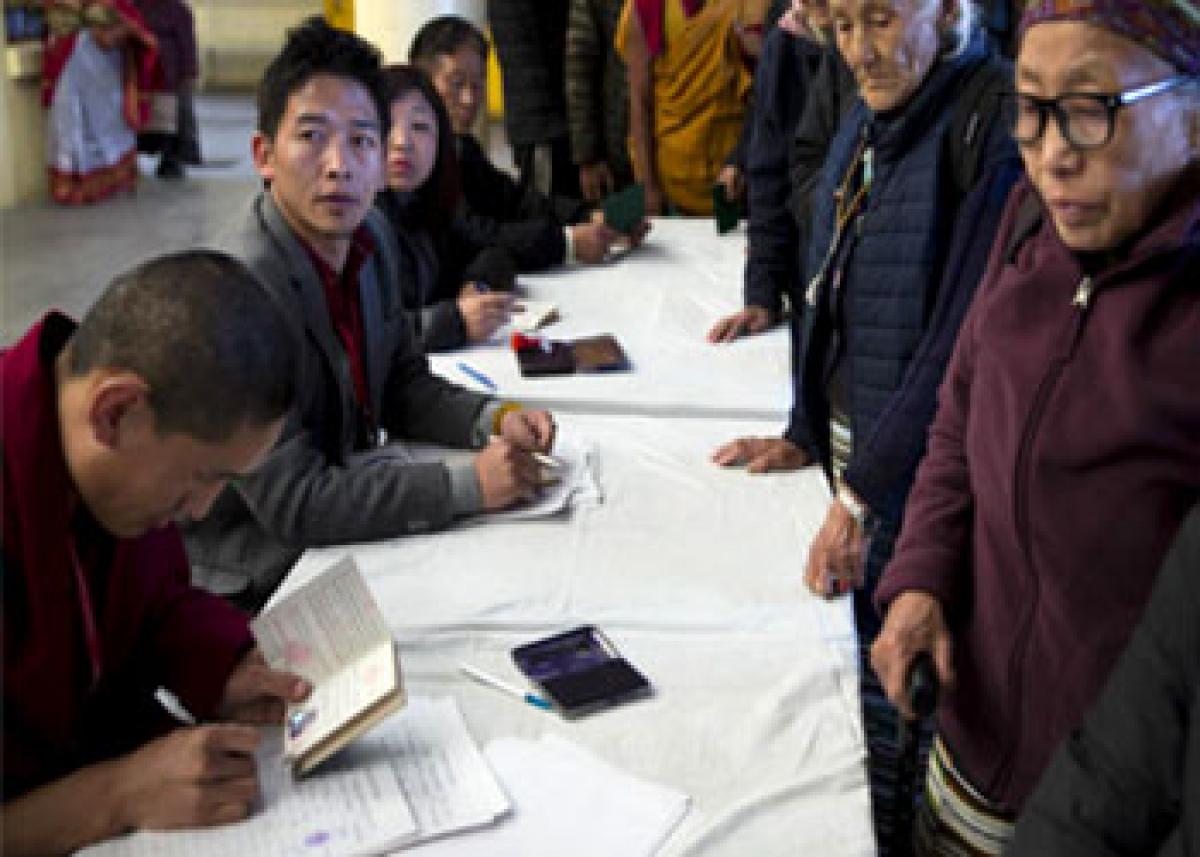Live
- Chanchalguda Jail Officials Say They Haven't Received Bail Papers Yet, Allu Arjun May Stay in Jail Tonight
- BJP leaders present evidence of illegal voters in Delhi, urge EC for swift action
- Exams will not be cancelled: BPSC chairman
- Nagesh Trophy: Karnataka, T.N win in Group A; Bihar, Rajasthan triumph in Group B
- YS Jagan condemns the arrest of Allu Arjun
- Economic and digital corridors to maritime connectivity, India and Italy building vision for future, says Italian Ambassador
- SMAT 2024: Patidar's heroics guide Madhya Pradesh to final after 13 years
- CCPA issues notices to 17 entities for violating direct selling rules
- Mamata expresses satisfaction over speedy conviction in minor girl rape-murder case
- Transparent Survey Process for Indiramma Housing Scheme Directed by District Collector
Just In

Tibetan exiles across the world on Sunday voted to elect their new \'Sikyong\' or prime minister as well as members of the parliament-in-exile based here in this northern Indian hill town.
Dharamsala: Tibetan exiles across the world on Sunday voted to elect their new 'Sikyong' or prime minister as well as members of the parliament-in-exile based here in this northern Indian hill town.
Long queues of men and women, flashing their green coloured voter identity cards, were seen in the morning at nine polling centres in this town to elect one of the two prime ministerial contenders -- incumbent Lobsang Sangay and Tibetan parliament speaker Penpa Tsering.
Polling took place in 85 places around the world.
The significance of the prime minister's post has gone up following Tibetan spiritual leader the Dalai Lama's retirement from active politics in 2011. The Dalai Lama is, however, not a voter.
A foreign delegation comprising members of the European Parliament was here as part of the Tibetan election observation mission, the Central Tibetan Administration's (CTA) press officer Jamphel Shonu told IANS.
Voters will also elect 45 members of the parliament-in-exile. A total of 94 candidates are in the fray. The results will be declared on April 27.
More than 90,000 Tibetans in exile across the world were to take part in the election. In the US and Europe, the electoral process is underway.
In India, voting took place, among other places, in Darjeeling (West Bengal), Bylakuppe (Karnataka), Bengaluru (Karnataka), Dehradun (Uttarakhand) and Delhi. It ended in India at 5 p.m.
Some of the other countries where the elections are taking place include Japan, Russia and Australia.
The 2016 general elections are the second direct elections for electing the Tibetan leadership since complete devolution of political authority by the Dalai Lama.
The five-year term of Prime Minister Sangay will expire in August. The 47-year-old Harvard-educated Sangay was the first political successor to the Dalai Lama.
Sangay's chances to get re-elected are high as he secured 19,776 votes more against his close rival Tsering, who polled 10,732 votes in a first round of voting in October 2015. At that time, 47,105 Tibetans voted.
Both prime ministerial candidates -- Sangay and Tsering -- had campaigned aggressively across the Tibetan settlements. Even the social media among the Tibetan diaspora was aggressively followed to highlight their issues and agenda.
"Resuming talks with China was and will remain my top priority," Sangay told reporters after casting his vote here.
Since assuming power in August 2011, grant of more autonomy in Tibet "within the Chinese constitution", creation of awareness on Tibet and education of the exiled youth are among crucial issues before Sangay.
He took over the reins of the government-in-exile from monk-scholar Samdhong Rinpoche, who held the post for 10 years.
Lobsang Wangyal, director-producer of the Miss Tibet pageant and a journalist, told IANS here: "I feel that Sangay's big degree hype (Harvard doctorate) didn't translate into real results. The talks between the Dalai Lama's envoys and China has been stalled since 2010, which is crucial to resolve the Tibetan issue."
He said that because Tsering promised to put every effort to revive the dialogue with China and also to improve the situation of the settlements, so many young voters voted for him.
The 80-year-old Dalai Lama, the global face of the Tibetan exile movement, lives in exile in this northern Indian hill town along with some 140,000 Tibetans, over 100,000 of them in different parts of India. Over six million Tibetans live in Tibet.

© 2024 Hyderabad Media House Limited/The Hans India. All rights reserved. Powered by hocalwire.com







